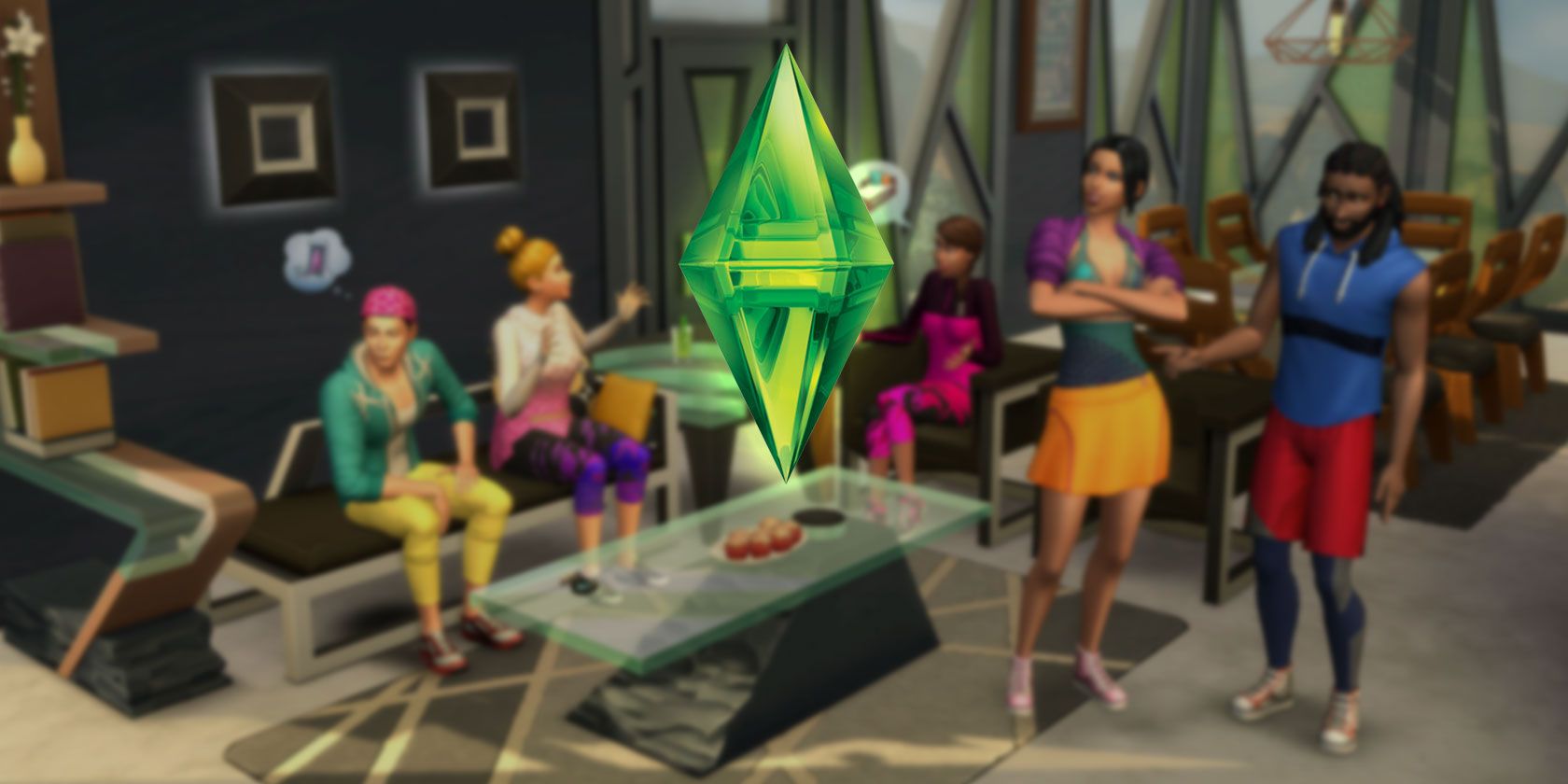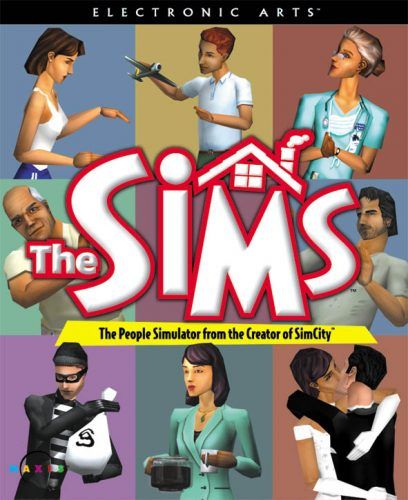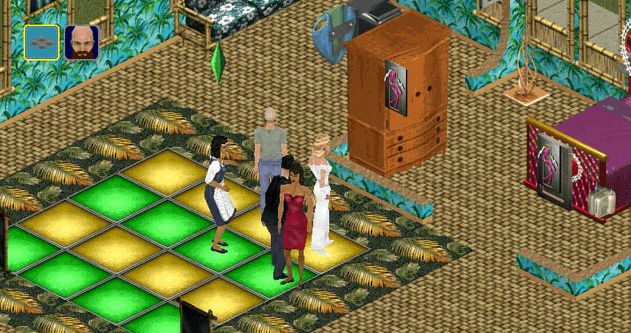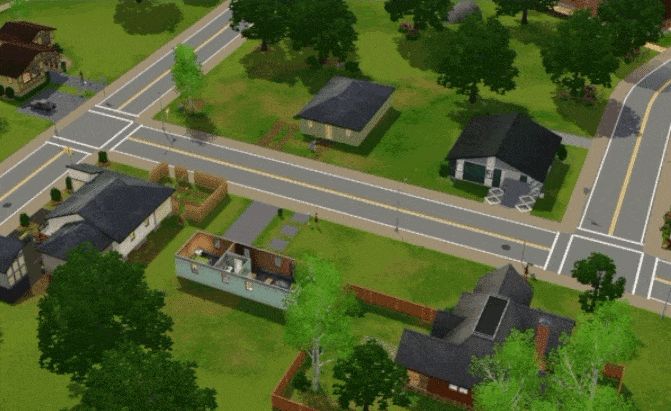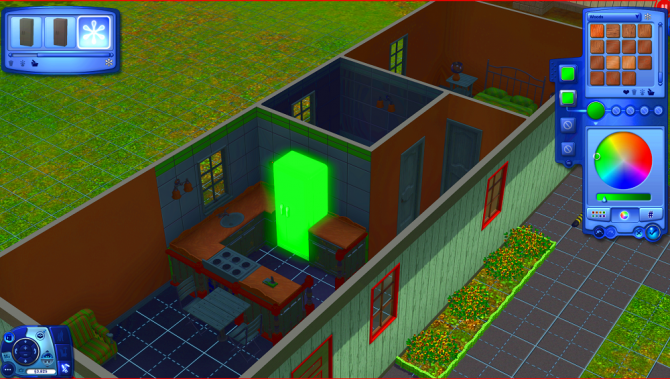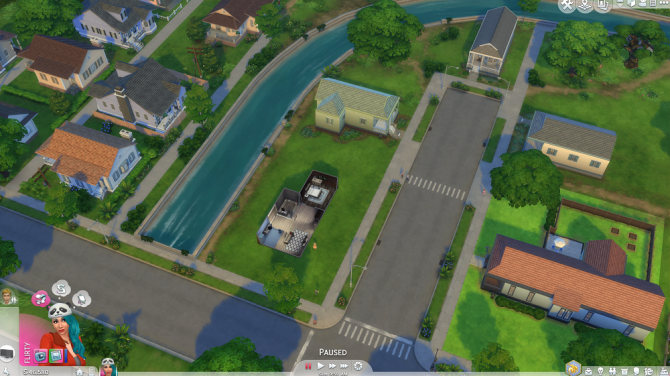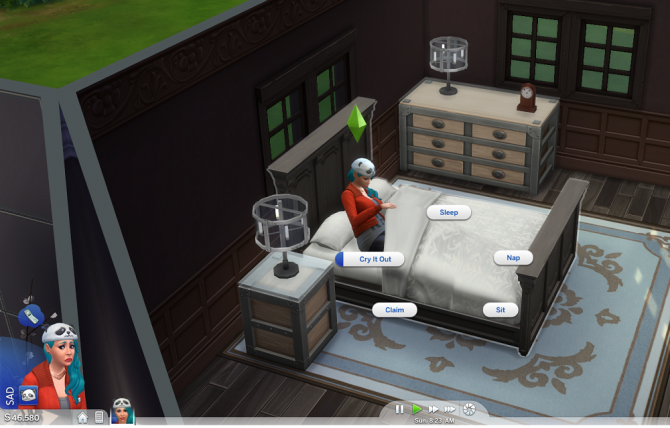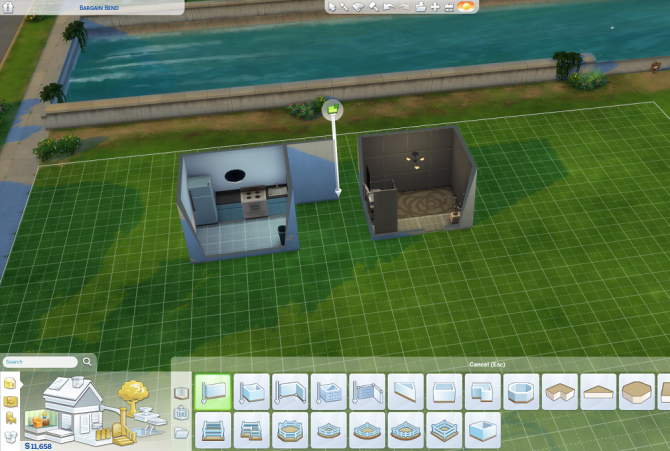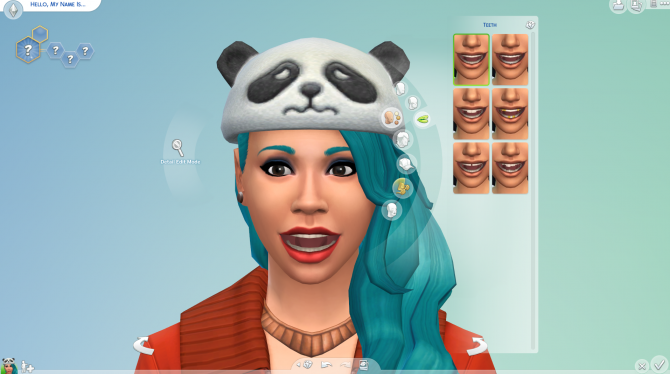Launched in 2000, The Sims is now an iconic franchise that has outlasted and outperformed many of its contemporary peers. It's strange to think that the franchise almost never got off the ground, as publishers weren't sold on whether it would actually be a success.
However, almost 18 years later, the series is one of the most recognizable and best-selling in the gaming industry, thanks in large part to player-minded features like the ability to create and add Sims 4 mods.
But how has it changed over time? Does the franchise still attract the hype and glory it had in the early 2000s? Here we offer a comparison of the Sims games, along with their highlights and low points.
The Sims (2000)
The Sims (TS1) was the first installment of the industry-changing franchise. There was some doubt about whether game designer Will Wright's concept would see success. However, soon after its launch, it became a best-seller. In fact, the game even held the title of the top-selling PC video games in history for some time.
So what were the main aspects of the game?
World and Neighborhoods
In The Sims, houses are located on lots within a neighborhood. These neighborhoods are relatively simple, consisting of around 10 lots each. In the base game, there's only one neighborhood and it's exclusively residential. Community lots for businesses appeared in a later expansion.
Each lot acts as its own separate instance -- you can't move between them without having to wait for a loading screen. Despite more neighborhoods appearing in later expansions, your Sims cannot travel between these neighborhoods.
Life Stages
The Sims came with the main three life stages seen throughout the series: baby, child, and adult. The game only fixed the first life stage, meaning that a baby would age into a child in three in-game days. However, the other two life stages did not age. As a result, your Sims stay as children or adults indefinitely, depending on how you introduced them into your household (through birth, adoption, marriage, or Create-A-Sim).
Due to the lack of aging, adult Sims could only die from accidents (or player murder plots). Meanwhile, children took inspiration from Peter Pan and stayed eternally young.
Sim Complexity
While incredibly complex for their time, the Sims seen in the original game lack the emotional and graphical complexity of their counterparts in later games. By today's standards, they are simple and not much to look at. Though at the time, they were considered amazing.
Gameplay was driven by a Sim's needs, such as hunger, entertainment, and sleep. They did not have any wants or aspirations, meaning your goals were more about fulfilling immediate needs rather than long-term plans.
In terms of customization and graphical quality, the original Sims came with the least complexity in the series. You can scroll between basic pre-designed heads and bodies, as well as three physique types: skinny, fit, or fat. The Sims were pixelated, while their limbs were relatively rectangular.
Expansions
The original Sims game has the fewest expansions in the series, as well as no Stuff Packs (content that mostly includes extra items, rather than new gameplay mechanics). Despite this, these seven expansions laid much of the blueprint for future expansion themes.
Each expansion significantly expanded gameplay, adding new regions, gameplay mechanics, and interactions. The seven expansions for The Sims were: Livin' Large, House Party, Hot Date, Vacation, Unleashed, Superstar, and Makin' Magic.
Positive Aspects
At the time of its release, The Sims was unlike anything else on the market. It took the fanfare around other simulation games and gave users an unprecedented and extremely personal level of control not seen in the others. The Sims became the first true life simulator game.
Despite initial doubts, it became a game that changed the industry. Its inclusion of same-sex relationships was also revolutionary at the time, as it was long before diversity and representation made it into the gaming industry spotlight.
Criticisms
Most of the criticisms you could throw at The Sims have more to do with hindsight, rather than the product at the time of its release. The graphics have not aged well when you compare them with modern games, but at the time they were considered quite impressive.
The main criticism facing the game when considering its time period is the pathfinding of characters. Characters would sometimes get stuck behind objects, meaning players had to move them around. At times, you would have to use cheat codes to move the Sim itself as you could not interact with objects in use.
It also had the big problem that almost all Sims games suffer from: increased loading times as more content arrives for the game. The more expansions you installed, the longer you had to wait for the game to load. This issue continues throughout the franchise.
Other than these two issues, TS1 was excellent for its time.
The Sims 2 (2004)
The second installment in the Sims franchise, The Sims 2 (TS2), was received positively by most fans. The base game was significantly more advanced than its predecessor.
TS2 continued the developer's venture into more offbeat ideas. One of the main noticeable features of The Sims 2 was the introduction of aliens as a playable Sim type. While it's considered a life simulator, these quirky inclusions became part of the franchise's core identity over time. Players can not only simulate a life, they could now simulate an imaginative dream life not limited by what's realistic.
World and Neighborhoods
The neighborhoods of TS2 expanded slightly on the foundation set by the original game. A major difference, however, is that TS2 comes with multiple neighborhoods and there is a mix of community and residential lots.
More lots were introduced in the expansions, but they tend to fall under the general categories of community versus residential properties. You also have the option to create completely new neighborhoods from scratch.
The concept of "sub-neighborhoods" was also introduced in expansions, which laid the groundwork for the open-world concept introduced in The Sims 3.
Life Stages
The Sims 2 significantly fleshed out the life stages seen in the original game. It also introduced the aging mechanic to the series. This resulted in a total of six life stages in the base game, while the University Life expansion introduced a seventh.
Sims would move through the stages of baby, toddler, child, teen, adult, and finally elder. If you had the university expansion, you could also experience the young adult stage.
Your Sims would also now die of old age, with a limit to the duration of each life stage.
Sim Complexity
TS2 saw a significant step up in terms of Sim complexity, thanks to the introduction of aspirations, wants, and fears. Aspirations are "big picture" goals -- what your Sim wants to achieve in that specific life stage. Meanwhile, wants and fears are day-to-day goals and aversions your Sims experience.
Wants and fears are determined by the Sim's aspiration or specific events (such as dates). For example, a Sim with the Knowledge aspiration will want to build up certain skills and fear getting kicked out of college. Fulfilling goals grants aspiration points, while fears will reduce these points.
You earn rewards as you reach higher aspiration levels and a full aspiration bar puts your Sim in a good mood. In terms of graphical quality, the Sims in TS2 are significantly upgraded from TS1. They are less pixelated, have more natural-looking features, and their faces show significantly more expressions.
Along with this, there is an increase in quality of animations for different interactions between Sims.
The extent of the improved graphical complexity of your characters can be especially seen in Create-A-Sim. Rather than scrolling through a limited number of head and body types, you have a much greater level of control over your Sim's appearance. There are many more hairstyles, controls for adjusting facial features, and specific makeup settings. You can even generate the appearance of a child Sim based on the "genetics" of their parents.
Expansions
TS2 had a total of eight expansions, with similar themes to the expansions of the previous game. The expansions include: University, Nightlife, Open for Business, Pets, Seasons, Bon Voyage, FreeTime, and Apartment Life.
TS2 also marked the introduction of "Stuff Packs," in-game content such as decor items and styles built around a specific theme. The 10 Stuff Packs for The Sims 2 include: Holiday Party Pack, Family Fun Stuff, Glamour Life Stuff, Celebration Stuff, Happy Holiday Stuff, H&M Fashion Stuff, Teen Style Stuff, Kitchen & Bath Interior Design Stuff, IKEA Home Stuff, and Mansion and Garden Stuff.
Positive Aspects
The best part of TS2 is the sheer extent to which it built on the groundwork laid by the original game. It's a symbol of a time when game sequels were usually much better than their predecessors, as opposed to failed reboots and underwhelming sequels that are part of the trends ruining modern gaming.
The introduction of aging and lifetime aspirations also upped the stakes in the game, giving more urgency to accomplishments. Managing your Sim's life was no longer just about making sure they don't starve, wet themselves, or die in a fire (though those are still important).
Criticisms
At the height of the game's popularity, there weren't many criticisms regarding TS2 or its expansions. However, long loading times became a problem as more expansions released. Even on a modern PC, loading The Sims 2 Ultimate Collection (which includes the base game and all its expansions) can take some time, especially when starting up a neighborhood for the first time.
Sims fans are all familiar with the shared experience of starting up the game and then leaving it to load while you get a snack or pass the time with another task. This was no different for TS2.
The Sims 3 (2009)
The Sims 3 saw a continued rise in quality of the franchise and still proves to be a fan-favorite game in the series. It was also one of the most ambitious installments, with a meaty base game plus many comprehensive expansions.
World and Neighborhoods
TS3 is the first and only Sims game to introduce an open world. The world is not unlimited, but different residential and community lots exist within the same instance. This is a significant departure from the previous separate instances for lots.
These worlds replaced the neighborhood format completely. Sims can travel between lots with a simple "Go Here" command. Rather than simply disappearing from your lot when they left for work, you could locate them somewhere in the world. You can even watch them travel there -- by foot, by car, or even horse.
Other Sims in the world are also more in-sync with your household, as they age at the same rate. However, gameplay focuses on a specific "active household." This means that if you created multiple households but continued to play the same active household, the other families you created would continue to age and eventually die.
Life Stages
TS3 has a total of seven life stages: baby, toddler, child, teen, young adult, adult, and elder. It is the only Sims game to have all these life stages available at the time of the base game's launch.
Previous games required expansions for certain life stages, while The Sims 4 only introduced certain life stages months after launch.
Sim Complexity
With the introduction of TS3 came further evolution of the Sims formula. This included a significant jump in graphical quality, but also more emotionally complex Sims.
Create-A-Sim introduced more customization options for your character, more fine-tuned feature editing (such as jaw width, nose length, etc.) and a better system for personality and aspirations. You can even adjust muscle tone and body fat for your character, instead of just choosing between "thin" and "fat" presets.
The game also moved away from the horoscope presets and points system for personality traits. You could now create more nuanced Sim character profiles. Previously, personality points were assigned along a simple spectrum of polar traits, which included Sloppy/Neat, Shy/Outgoing, Lazy/Active, Mean/Nice, and Serious/Playful.
But in TS3, there are a total of 63 traits in the base game. These include traits such as flirty, greedy, evil, childish, and even vegetarian. Child Sims get more traits as they grow up and these traits are often based on their upbringing and genetics.
The aspirations, wants, and fears system from TS2 developed into a more advanced Wishes and Lifetime Rewards system in TS3. While fears still exist, they have an much-reduced importance now.
Sims continue to have short-term wishes (similar to wants) and Lifetime Wishes (long-term aspirations). Achieving these give you reward points which you can spend on unique, rare objects and permanent new traits for your Sim.
Expansions
TS3 saw developer Maxis pump out the most expansions for any Sims installment, while reducing the number of Stuff Packs. The third Sims game saw the release of 11 expansions: World Adventures, Ambitions, Late Night, Generations, Pets, Showtime, Supernatural, Seasons, University Life, Island Paradise, and Into the Future.
Only nine Stuff Packs were released for TS3. These were High-End Loft Stuff, Fast Lane Stuff, Outdoor Living Stuff, Town Life Stuff, Master Suite Stuff, Katy Perry's Sweet Treats, Diesel Stuff, 70s, 80s, & 90s Stuff, and Movie Stuff.
Positive Aspects
TS3 was a high point for The Sims franchise. It has some of the most comprehensive expansions, more control for players, and more complex Sims. The game does well in both graphical and gameplay quality considering the year of its release. While its appearance has aged somewhat, it still has some longevity left in it. In fact, some fans still spend time in Sims 3 over Sims 4 due to its lower cost and higher amount of content.
A notable highlight of the game is also the Create-A-Style feature, which gives users a deep level of control over the design and coloring of specific objects. It also lets you fine-tune the creation of Sims' hair colors.
The TS3 launcher's integration with the online community also means that installing custom content for your Sims games became a popular activity for fans.
Furthermore, the open world increases immersion significantly. Transitions between buildings feel natural, time feels less disjointed when your Sim leaves for specific events, and seeing other Sims wandering around gives the neighborhoods a more lively feel.
At the time of its launch it became EA's best-selling game ever, which is impressive considering EA had other popular and established franchises such as Battlefield and FIFA.
Criticisms
The criticisms of The Sims 3 mostly include bug and performance issues. Players also really disliked the increased loading time of the game as more expansions came out.
Because TS3 has an open world, most of the time spent waiting for loading screens is when players start the game up. There were also issues with optimization, meaning that some players with lower-performing PCs just couldn't get the level of performance they needed to truly enjoy the game.
These loading time and performance issues were cited as one of the reasons that TS4 scrapped the open-world system.
The Sims 4 (2014)
The Sims 4 (TS4) is the latest but most controversial installment in the franchise. The game saw a serious overhaul of features from TS3. EA scrapped certain popular features, which drew the ire of fans.
However, it also introduced a super-complex Sim creation system and a different, but appealing, graphical style.
World and Neighborhoods
The most obvious change to the world of TS4 is the removal of an open-world system in favor of separate instances for different lots. Confusingly, the new system refers to groups of lots as "worlds," but they are not open as in TS3.
The "world" in TS4 refers to a neighborhood area, made of up around 16 lots. However, this world is segmented into smaller pieces or districts -- simply referred to as "neighborhoods" in TS4. Each of these neighborhoods, which usually only have four or five lots, is a separate instance. Sims can walk around this small area, but traveling to any other districts or lots brings up a loading screen.
Furthermore, even visiting lots within your own district brings up a loading screen. This means that if you want to go visit the family next door, you have to wait for their house to load. When you return home, you again have to sit through a loading screen.
Life Stages
TS4 technically has seven life stages: baby, toddler, child, teen, young adult, adult, and elder. However, at the time of its launch in 2014, toddlers were not available. This life stage was only introduced in a patch at the beginning of 2017.
Babies technically count as a life stage, but they do not function as one. They are actually just interactive objects in a bassinet -- the same format as TS1.
Sim Complexity
Two of the biggest marketing points for The Sims 4 are its new Sim creation system and the new Emotion system. EA even uses the tagline "Smart Sims. Weirder Stories."
The game adopted a different art style from previous entries, one which is more cartoonish rather than realistic. While you could consider it a simplification of Sims' appearances, it actually helps them seem less out-of-place. This abandonment of attempted realism actually makes Sims look better.
Much of the pre-launch hype for the game stemmed from the new Create-A-Sim mode. Players have a much higher level of control over their Sim's creation.
When it comes to your Sim's personality, the trait system still exists in TS4. However, the Emotion system is one of the biggest influencers when it comes to your Sim's daily actions and mood.
Emotions affect your Sims' interactions with objects and other characters. They take the form of a buff that affects your Sim's mood, much like moodlets in TS3. Emotions also have three levels of intensity: an initial stage (e.g. angry), a more intense stage (e.g. very angry), and an extreme stage that can result in death by that emotion. The third stage only applies to certain emotions.
Emotions also unlock new interactions with objects and Sims. Some of these interactions intensify the emotion (e.g. romantic interactions increase flirtiness), while others alleviate them (e.g. confessing embarrassment to another Sim can help alleviate the Embarrassed emotion).
Sims' interactions with each other are also slightly more complex, but easier to track. In TS3, you would sometimes look away only to come back and find your Sims arguing and angry with each other. If you didn't know the cause, it was difficult to determine how to get your Sims interacting neutrally again.
However, in TS4, you can see the tone of a conversation and whether it's going well. If one of your Sims makes a faux pas, you will see the conversation classified as an "Awkward Interaction." Much like an emotional state, the state of a conversation can intensify. This adds an extra level of complexity to Sim social interactions while giving you a clearer picture of the situation.
Expansions
TS4 has the fewest expansion packs of The Sims games, despite it being only a few months away from its four-year anniversary. There are currently four expansions: Get to Work, Get Together, City Living, and Cats & Dogs.
The Sims 4 also introduced "Game Packs", which are essentially mini-expansions. These packs have considerably less content than an expansion, but include more gameplay elements than Stuff Packs. There are currently five Game Packs available for TS4: Outdoor Retreat, Spa Day, Dine Out, Vampires, and Parenthood.
When it comes to Stuff Packs, however, the developers of TS4 have been especially prolific. EA has released 12 Stuff Packs already, and at least one other is on the way. This means that TS4 will have the most Stuff Packs of any Sims game.
For more, check out details on these expansion packs for The Sims 4 and if they're worth buying.
Positive Aspects
The Sims 4 definitely has the most advanced Build Mode of all the games, giving users an unprecedented amount of control over the design of their Sims' homes. While Create-A-Style no longer exists, the level of nuance of the new building system is obvious. You can adjust wall heights, door heights, window placements, and the shape of structures too.
Considering that the franchise was born from city-building games and shares much of its fanbase with Sim City lovers, building is an integral part of the gameplay for many players. It's great to see the building system become more precise and intricate.
The Create-A-Sim system is also the best in the franchise, with impressively precise control. The click-and-drag functionality to alter features makes crafting a Sim's appearance a more intuitive experience. The only downside is that it seems like there's less variety in hairstyles. I tried to create a Sim with medium or long curly hair and couldn't do that despite being able to in previous installments.
TS4 is also one of the most light-hearted Sims games. Its tone is similar to some modern silly simulation games. You can see this most often in emotion-related actions, such as taking an "angry poop."
Despite the humor embedded in the game, it is also surprisingly socially conscious. Patches over time have given players more control than ever over their Sim's creation and identity. The game has taken a much less restrictive view of gender and allows players to select any clothing and hair styles regardless of gender. You can also specify whether your Sim is capable of getting pregnant or impregnating others and whether they stand or sit when going to the bathroom.
This falls in line with the franchise's history of trying to be inclusive of all members of its player base, even if these moves are sometimes seen as controversial. Regardless of your opinion on the moral debate surrounding this, you can't deny that the game developers have given players the tools to really simulate their dream lives to the tee.
Even though the removal of the open-world system is a major drawback for many fans, TS4 does actually have improved loading times. You won't be running the game on a USB drive anytime soon, but it is slightly quicker than its predecessors. However, this could also be due to the lack of content, fewer expansions, and a different game engine. Some may see the time saved as not enough to justify the loss of neighborhood mobility.
Criticisms
The criticisms of The Sims 4 were plenty even before the game launched. But years after its launch date and subsequent patches, many criticisms of the game still persist.
TS4 is a game which embodies the increasingly acrimonious relationship between EA and its player base. Over the years, players have accused the publisher of cutting out content so that it can sell more DLC. The Sims 4 is one of the biggest examples of this. At launch, many players noticed TS4's lack of content.
Furthermore, the game took a few steps back from the progress made with The Sims 3. They scrapped the open world, and reduced babies to interactive objects. Plus, the toddler life stage was absent and even swimming pools were not included at launch.
The developers patched some of these issues. Swimming pools reappeared shortly after launch, while toddlers came back with free DLC in 2017. However, there's still less content than fans want and infrequent expansion releases aren't helping the situation. Expansion packs are few and far between, and they lack the depth of content of their TS3 counterparts.
TS3 saw 11 expansions released in the four years between 2009 and 2013. However, since its 2014 release, TS4 has only had four expansion packs. These expansions aren't chock-full of content either, as the recent release of The Sims 4: Cats & Dogs proves. The corresponding TS3 expansion Pets included animals such as horses, creatures like deer, as well as smaller pets such as turtles and snakes. However, TS4: Cats & Dogs only has two pet types, those mentioned in the title. You can technically create a raccoon or fox, but these are classified as specific dog and cat breeds. You also cannot control these pets directly, as players are able to do in TS3.
Meanwhile, the game has seen a slew of Game Packs. This furthers the feeling of limited content for high prices. For example, rather than a Supernatural expansion pack, EA released a Vampires game pack. This essentially gives players a quarter of the content of an expansion pack, but at half the price of an expansion. Expansions, when not on sale, are equal to or more than the price of the base game despite their limited content.
If you purchase all the expansions and game packs, you'll have way more content to enjoy. But the price of these titles is a serious deterrent when one considers their limited scope. Thus, many players have turned to mods for additional fun.
Lazy Game Reviews summed up these criticisms in a 2016 monologue on The Sims 4. The YouTuber is an avid fan of the franchise and a prolific reviewer of the various game packs and expansions, but he has frequently criticized the latest installment for how underwhelming it has been. You can see his critique in the video below:
The Sims 4 is an enjoyable game, but wastes so much of its potential. The franchise took multiple steps backward with this entry. You'll still spend many hours in the game, but not nearly as many as in TS2 or TS3.
Will We Ever See Another Sims Game?
The lack of love for TS4 compared to previous entries has put the future of the franchise into question. Many players desire more Sims action, but remain disillusioned.
Rumors about The Sims 5 emerged last year, but EA hasn't confirmed any of these. They are also mostly based on the development schedule of previous entries in the franchise. But the current profit-focused culture enshrined by TS4's content issues could be the death knell for the series, especially in light of the controversy around EA's bad practices.
At the same time, despite the continued popularity of god simulator and management games, The Sims series has yet to find a competitor of similar scope and quality. This could mean the franchise has some hope left.
Do you think the Sims franchise still has some potential left in it? Which was your favorite Sims game? Let us know in the comments below!

